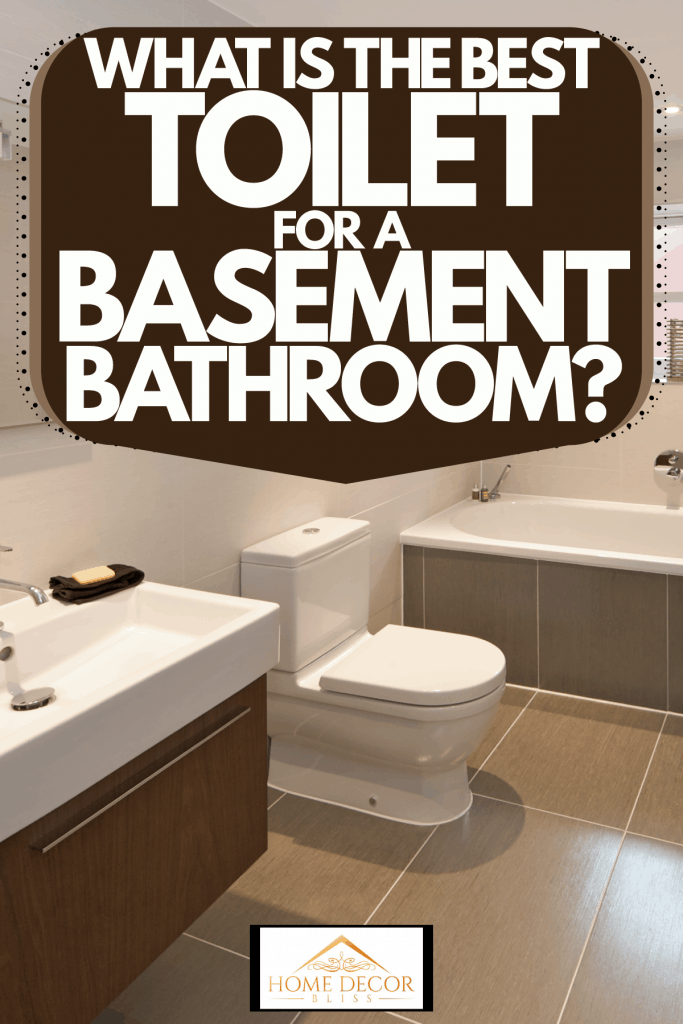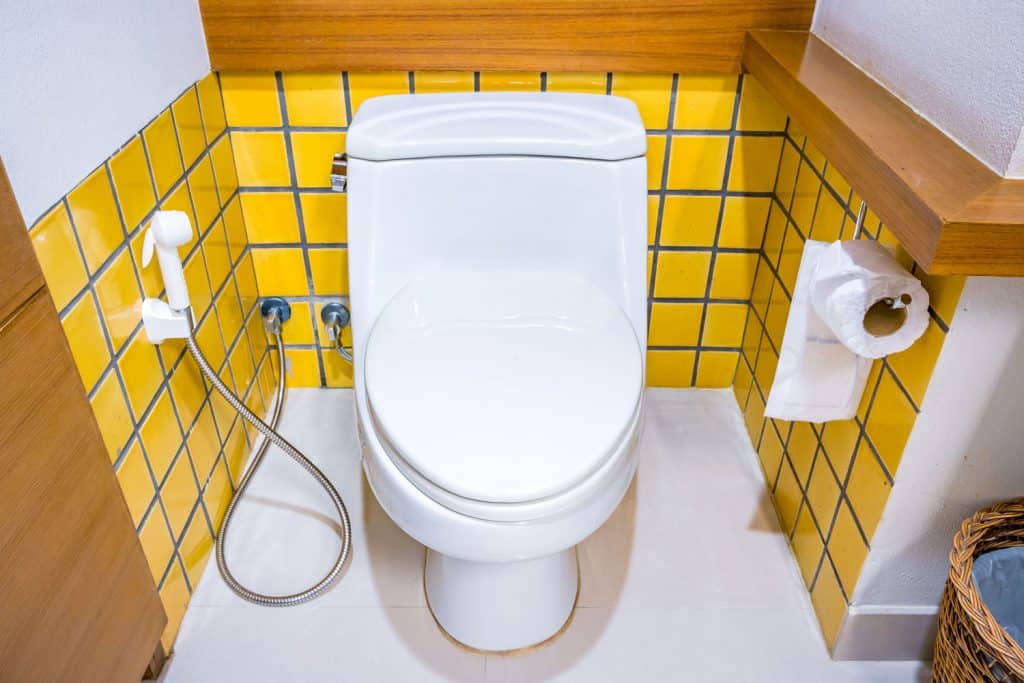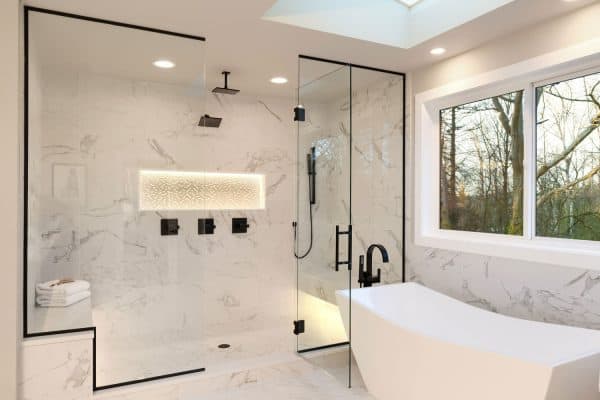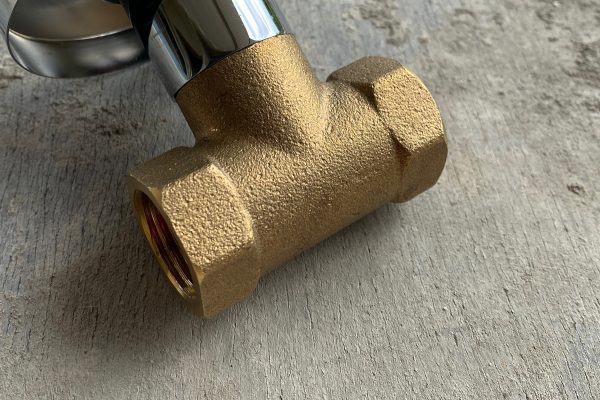To get the most bang for your buck, you might be considering adding a bathroom to your finished basement. For the biggest return on investment, basements with a bedroom and bathroom are huge selling points. But plumbing in a basement can really be a beast of burden. What kind of toilet will give you a nice, working bathroom and not just an expensive plumbing nightmare? We've checked with plumbing experts for everything you need to know about installing a toilet in your basement bathroom.
The best toilet for a basement bathroom depends on whether you use a pressure-assisted toilet or a macerating (or Upflush) toilet. Pressure-assisted toilets rely on gravity and your regular septic/sewer lines and work like any "standard" toilet. Good choices include:
- American Standard Cadet
- Kohler Highline
Macerating toilets force waste through a pipe up, rather than down, to meet your sewer line. These can be used in situations where plumbing is inadequate to support a "standard" toilet. Highly recommended options are:
- Saniflo SaniAccess3
- Liberty Pumps Ascent II
- Saniflo Sanicompact
Keep reading to learn more about when you can use a pressure-assisted toilet and when you're better off with a macerating toilet. We'll also cover what stands out about each of these toilets. And, there's a third way to deal with waste in a basement bathroom - we'll cover that too.

Do I Need A Special Toilet For My Basement?
The big obstacle in basement toilets? Gravity. A regular toilet may not be able to flush away the waste. If the sewer line runs deep, down below the floor level of the basement, then you might luck out. In this case, a basement toilet will function much like any other toilet, simplifying the process.
But you'll still need to make sure that it's practical. For instance, you'll need to check that the flow rate of your plumbing will be adequate to remove all waste. You'll also want to install a backwater valve if you're on a city sewer line. This may require a permit, so be sure to do your homework and consult a plumber before you act.
What Kind Of Toilet Do I Need For A Basement?

We may include affiliate links and curated AI content to highlight top design styles.
Assuming all of this is in place - adequate flow, deep sewer lines - you still will want a pressure-assisted toilet. There isn't the same strength down in the basement. Don't keep fighting clogs - put in the right toilet and avoid the trouble.
American Standard Cadet
This one comes with an elongated bowl and a flow rate of 1.6 gallons per minute. It's ADA certified and considered "comfort height." As an extra bonus, it has EverClean technology. This inhibits staining and the growth of odor-causing mold, mildew, and bacteria.
Click here to see the American Standard Cadet on Amazon.
Kohler Highline
This is another highly recommended option, very similar to the American Standard. It has an elongated bowl, comfort height and can be installed to meet ADA requirements. It also has a DryLock installation system to prevent leaking.
Click here to see the Kohler Highline at Amazon.
If you aren't lucky enough to rely on your regular sewer lines, you still have a few other options. First, there's installing an in-floor sewage ejector system. In this scenario, a tank is installed to collect waste. It is then pumped out into the regular septic system. The second choice is an up-flush toilet system.
Sewage Ejector System
For a basement sewage ejector, a basin or holding tank is installed into the floor. All of the water from your basement bathroom will drain into here. This means that this system can be a solution for not only the toilet but the bathroom sink, shower, or any other plumbing problems you face.
A sewage ejector pump goes inside the bottom of the basin. This pump grinds up the waste. Then it pumps the waste out into your home's existing waste system. PVC piping is used both to move the waste into the basin and out into the home's waste system. The system costs somewhere around $1500 in all. However, if you're handy with plumbing, you can do it yourself for a fraction of the cost ($400-$500).
If you can't deal with the hassle of digging up the floor, there are free-standing tanks available. These don't have to be put into the floor, so they are easier to install. However, some plumbers don't find them as efficient. Whether you go above ground or in-ground, you can place it in a storage closet or build a partition or closet to help keep it from being an eyesore.
Do Upflush Toilets Work?
Upflush toilets are self-contained systems. This toilet works as its own separate unit. You won't have to dig holes in the concrete for special waste basins and plumbing. The lines run through the walls to the basement ceiling, then hook into the existing septic/sewer line.
They do work but keep in mind that this doesn't solve any other water issues in the basement. This doesn't offer a way to remove the wastewater from the bathroom sink, for example, or any other fixtures like a shower. Installing a sewage ejector means that you can plumb all water into that tank for easy removal. A self-contained Upflush toilet takes care of itself, no more and no less.
There can also be an unpleasant odor from time to time. This is more situational - some people report an occasional odor, while others swear they've never had this problem. Space, ventilation, moisture control, and other similar factors will probably play a role in whether this is an appropriate solution for your basement. Often, the smell is caused by limescale build-up, so be prepared to clean regularly to keep this at bay.
Do Macerating Toilets Work Well?
Macerating toilets, aka Upflush toilets, do work - but you need to use them properly. It's important to understand that it works differently while a macerating toilet looks just like a "regular" flushing toilet. The waste goes behind the toilet through a macerator, which shreds up the waste. It is then flushed "up" through the plumbing, where it enters the regular septic lines.
Since they have different internal equipment, there are a few things to watch out for. Don't ever flush sanitary pads, baby wipes, or other garbage - toilet paper only. It's just too easy to create a blockage, trying to flush things that the system isn't made to handle. In all fairness, ask any plumber, and they'll say the same - even a "regular" toilet risks clogs when you flush items like tampons and sanitary pads.
Secondly, follow the directions for cleaning. Overusing bleach tends to break down the rubber parts quickly and should be avoided. Limescale build-up can create odors. However, your toilet will come with care instructions - be sure to do what the manufacturer says, and you'll be fine.
What Toilets Do Plumbers Recommend?
Saniflo is the most recommended brand, though we did find a few other affordable options that kept popping up on plumbers' "most loved" lists. Here are a few of the favorites:
Saniflo SaniAccess3
Saniflo is a well-known brand that comes highly recommended. They're well established, which also means it's easy to find replacement pieces and spare parts.
Click here to see the Saniflo SaniAccess3 on Amazon.
Liberty Pumps Ascent II
This one is a bit more economical. It also uses less water, with a 1.28 gallon per flush rating.
Click here to see the Liberty Pumps Ascent II on Amazon.
Saniflo Sanicompact
Yes, it's another Saniflo - but that's just how much the company stands out when it comes to Upflush toilet systems. This is the one that you want if you're dealing with limited space. The compact size makes it perfect for a tight, small bathroom. It also has the option to plumb in the runoff from a sink, making it easier to deal with your wastewater removal.
Click here to see the Saniflo Sanicompact on Amazon.
In Summary

If you're fortunate, and your sewer lines run deeper than the basement floor, then a regular toilet may work in your basement. Still, select one with pressure-assist technology. It just gives your plumbing the extra boost it needs to remove waste. And, you'll need to consider factors such as adequate flow rate and install a backwater valve in most cases. Good pressure-assist toilets include the American Standard Cadet or Kohler Highline.
When your plumbing is insufficient, then you can always install an Upflush or macerating toilet. These self-contained systems push the waste into a macerator, which shreds it. Then, it is pumped up and away through a series of pipes until it meets the regular septic lines and finishes its journey out of the house. If you go this direction, consider a Saniflo, particularly the SaniAccess3 or Sanicompact. Another highly rated macerating toilet is the Liberty Pumps Ascent II. You can also consider installing a sewage ejector system, which collects waste in a basin and then pumps it away. This means that you can use any standard toilet.
If you enjoyed this article, consider:






![Marble walled shower wall, 5 Best Types Of Shower Wall Panels To Consider For Your Bathroom Renovation [The Ultimate Guide]](https://homedecorbliss.com/wp-content/uploads/2023/07/shutterstock_2138160219-600x400.jpg)

